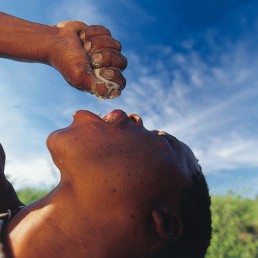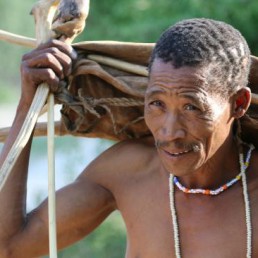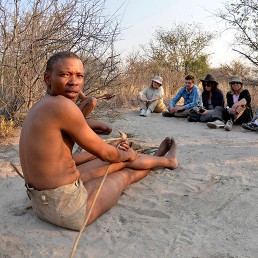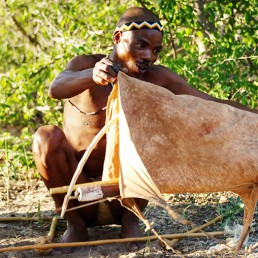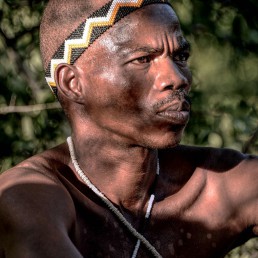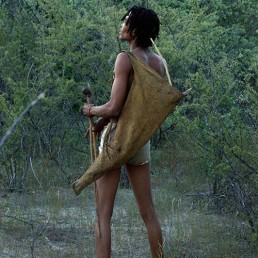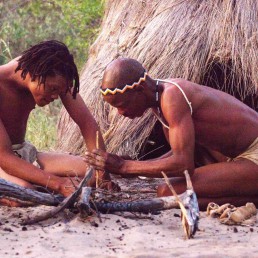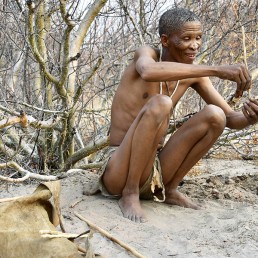THE OLDEST GENE PATTERN
The San were the first people to inhabit Southern Africa, where they have lived for over 20.000 years. The San are the descendants of the first Homo sapiens, i.e. modern man.
Every person alive today descended from a woman who lived in modern-day Botswana about 200,000 years ago.
The San have genetic traces that no one else in the world has, that puts them at the root of the human tree. They are totally adapted to the harsh climate of the Kalahari. They are small in stature to burn less energy in lean times and build athletic to run long distances in the scorching heat. The skin is light yellowish to absorb less heat from the sun. In times of plenty they have ponderous posteriors, an excellent way for storing fat for lean seasons. Their eyesight is keen and highly trained for the hunt and to spot coming dangers.
Nomadic hunter-gatherers
At Deception Valley Lodge you will meet the traditional Bushmen from the Naru tribe. Listen to the Naru language, the first written Bushmen language that contains 37 different clicks. Historically, the San were hunter-gatherers who maintained a nomadic lifestyle. This meant that they moved throughout the year in accordance with the availability of water, game and the edible plants that they used to substitute their diet and those for medical use.
In the past
In the past, familiar groups or bands of San usually numbered around 10 to 15 individuals. They lived off the land, erecting temporary shelters in summer, and more permanent structures around waterholes in the dry winter. The San are egalitarian people and traditionally have no official leader or chief. Woman are considered relatively equal, and dicisions are made as a group. When disagreements arise, lengthy discussions are held to resolve any issue. San men were responsible for hunting to feed the entire group – a collaborative exercise achieved using hand-crafted bows and arrows tipped with a poison made from ground beetles. Meanwhile, the woman gathered what they could from the land, including fruit, berries, tubers, insects and ostrich egges. Once empty, the ostrich shells were used to gather and store water, which they bury in a hole dug into the sand.
Respected for their survival skills
Today, it is estimated that there are around 100.000 San still living in Southern Africa. Only a very small fraction of these remaining people are able to live according to their traditional lifestyle. As is the case with many first nation people in other parts of the world, the majority of San people have fallen victim to the restrictions imposed upon them by modern culture.
Unable to roam freely across the land as they would once have done, most are now labourers on farms, while others rely on state pensions for their income. However, the San are still respected by many for their survivalk skills, which include tracking, hunting and an extensive knowledge of edible and medicinal plants. In some areas, San people are able to live off these skills in a different way, by teaching them to others at Bushmen encounters.


